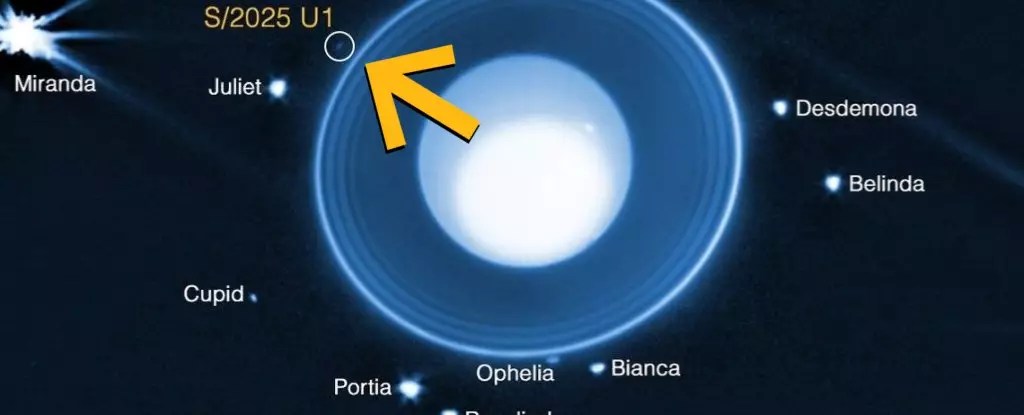The recent discovery of a tiny, previously unknown moon circling Uranus symbolizes both the marvels and limitations of our scientific exploration. With the detection of S/2025 U1—an object merely 10 kilometers across—scientists are forced to confront our profound ignorance about the distant icy giant. Despite decades since Voyager 2’s brief encounter in 1986, our knowledge remains superficial. This tiny moon, revealed by the advanced James Webb Space Telescope (JWST), underscores how much remains hidden in the depths of our solar system, especially around enigmatic planets like Uranus.
The fact that this moon was invisible to Voyager 2’s instruments and only detected through JWST’s near-infrared camera illustrates the dramatic leaps in observational technology. Yet, it raises crucial questions about the completeness of our planetary census. What other celestial bodies lie undiscovered, obscured by distance or faintness? The discovery hints at an ongoing, perhaps limitless, process of uncovering planetary intricacies that defy our current understanding. Our quest to map the solar system is far from over; it is arguably just beginning.
The Complexity of Uranus’s Moons: A Window into a Chaotic Past
Uranus is not a straightforward celestial body. Its intricate system of moons, particularly the small inner satellites, paints a picture of chaotic evolution. The new moon, positioned between Ophelia and Bianca, reflects a surprisingly orderly orbit, nearly circular and stable enough to suggest a formation in its current location. However, the broader environment hints at a tumultuous history filled with collisions, fragmentation, and gravitational chaos.
The discovery challenges the traditional view of planetary systems as static or simple. Instead, Uranus’s collection of small moons, intertwined with its rings, reveals a complex dance that blurs the lines between ring systems and moon systems. It’s as if Uranus is a cosmic relic of internal upheavals—an ongoing ripple of past collisions and rearrangements. This chaotic history should inspire us not with awe alone but with a cautious awareness of how little we really comprehend about planetary evolution.
The Implications for Future Exploration and Human Curiosity
The role of JWST in this scientific milestone exemplifies how modern tools extend our reach into the cosmos. Still, it’s astonishing and somewhat unsettling that, four decades after Voyager’s flyby, our understanding remains embryonic. Each new discovery should serve as a bitter reminder that human curiosity has outpaced our resources, and perhaps our priorities, allowing vast swaths of space to stay hidden just beyond our grasp.
While some may argue that space exploration should be prioritized for technological and geopolitical gains, the underlying truth is that knowledge itself is a powerful currency. Every new moon, every faint celestial object, deepens our questions rather than simplifying them. It exposes our shortcomings and calls us to allocate more focus and investment. The universe is revealing itself layer by layer, and it’s a reflection of our collective ignorance—a challenge that demands humility, not hubris.
In this relentless quest to uncover cosmic secrets, the question remains: have we truly learned enough to understand, or are we merely skimming its surface? Our fascination with space should be driven by the recognition that discovery is ongoing, but so is our ignorance. The universe’s silent, icy giants continue to hold their secrets, challenging us to look deeper, think smarter, and question more.

